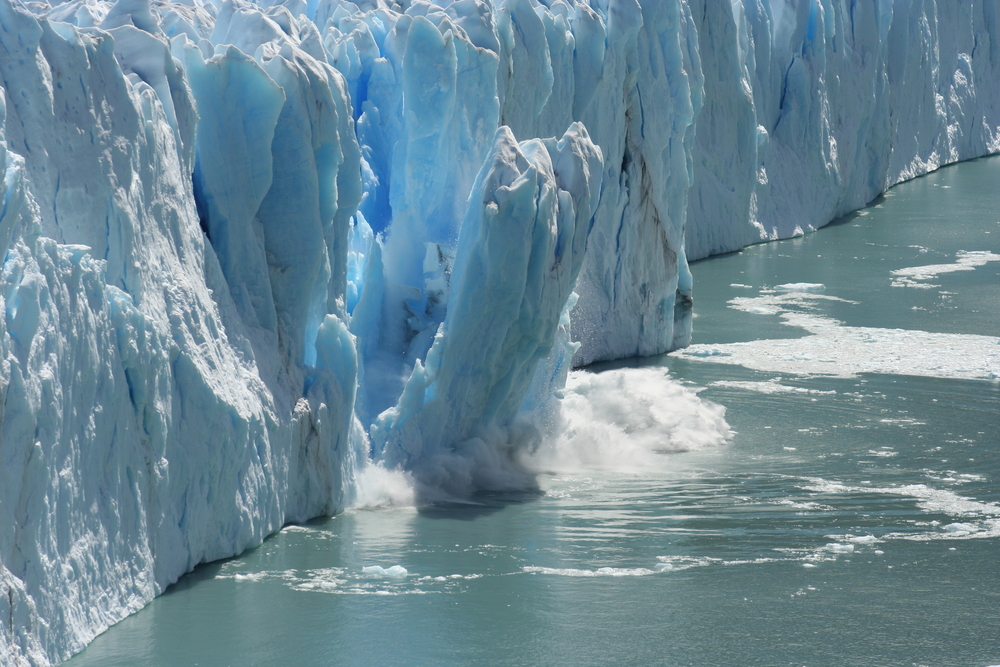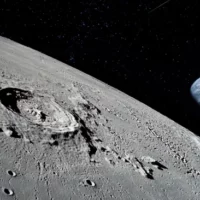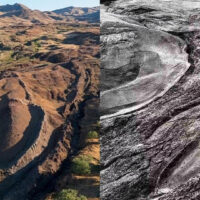In our quest for a healthier planet, understanding the rapid changes in our environment is crucial. One alarming development is the unprecedented increase in carbon dioxide levels. Recent studies reveal that the rate at which Carbon Dioxide is accumulating in our atmosphere is unlike anything seen in the past 50,000 years. This rapid rise is more than a mere statistical anomaly; it holds profound implications for our climate and, by extension, our collective well-being. So, what’s causing this spike, and what does it mean for our future? Let’s delve into the findings and their significance, exploring how this issue affects not only the planet but also our holistic approach to health and wellness.
Unprecedented CO2 Increase
The current rise in carbon dioxide (CO2) levels is not just a blip on the radar—it’s a dramatic spike that scientists are watching with increasing concern. Historically, the Earth has experienced fluctuations in CO2 levels, but nothing compares to what we are witnessing today. To put it into perspective, the rate at which CO2 is being released into the atmosphere now is ten times faster than the highest natural rate observed in the last 50,000 years.
This rapid increase is primarily driven by human activities, such as burning fossil fuels, deforestation, and industrial processes. In the past, natural events caused CO2 levels to rise more gradually. For example, 7,000 years ago, a significant natural increase saw CO2 levels rise by 14 parts per million (ppm) over 55 years. Today, that same increase happens in just 5 to 6 years.
Such a rapid escalation in CO2 levels has far-reaching consequences. It disrupts the delicate balance of our climate system, leading to more extreme weather events, rising sea levels, and shifts in ecosystems. Understanding this unprecedented change is the first step in recognizing the urgency of taking action to mitigate its effects. The stakes are high, and the window for meaningful intervention is narrowing.
By exploring the past and present trends in CO2 levels, we can gain valuable insights into the challenges we face and the steps we need to take to ensure a healthier future for our planet and ourselves.
Insights from Antarctic Ice

To comprehend the scale and speed of our current CO2 predicament, scientists have turned to an unlikely source: ancient ice. Antarctic ice cores, which trap air bubbles from thousands of years ago, offer a unique window into our planet’s atmospheric history. By analyzing these trapped gases, researchers can reconstruct a timeline of CO2 levels and compare past natural changes to today’s man-made surge.
Recent studies examined ice cores spanning the last 50,000 years. This period covers significant climatic events, including the last ice age and the subsequent warming phase. The findings revealed that the fastest natural increase in CO2 occurred around 7,000 years ago, with a rise of 14 parts per million (ppm) over 55 years. In stark contrast, our current rate achieves this increase in just 5 to 6 years.
These insights are not just numbers; they illustrate a dramatic shift in how our planet’s atmosphere functions. The speed of today’s CO2 rise is unprecedented, largely driven by human activities such as burning fossil fuels and deforestation. This rapid change outpaces the natural adjustments the Earth has made in the past, raising concerns about our climate’s ability to adapt.
The Antarctic ice core studies underscore the importance of historical data in understanding present challenges. By learning from the past, we can better grasp the severity of today’s environmental changes and the urgent need for action. These findings remind us that our current path is not sustainable and that we must make conscious efforts to reduce our carbon footprint to protect the future health of our planet.
Historical Carbon Jumps and Heinrich Events
Delving deeper into the history of carbon dioxide levels, scientists have identified peculiar periods of abrupt CO2 increases known as Heinrich Events. These events, occurring during the last ice age about 10,000 years ago, are characterized by rapid and significant jumps in CO2 levels. Understanding these past phenomena can provide valuable context for the unprecedented changes we are witnessing today.
Heinrich Events are believed to be triggered by the dramatic collapse of the North American ice sheet. This collapse set off a chain reaction involving changes in the tropical monsoons, shifts in Southern Hemisphere westerly winds, and the release of large amounts of CO2 from the oceans. These natural processes illustrate how interconnected our planet’s climate systems are and how changes in one area can have far-reaching impacts.
Recent research has shed light on the mechanics of these events, revealing that the westerly winds played a crucial role. These winds influence deep ocean circulation and, during the Heinrich Events, their strengthening led to a rapid release of CO2 from the Southern Ocean. This historical precedent is particularly concerning because similar patterns are emerging today.
As human-induced climate change strengthens the westerly winds once more, we could see a repeat of these rapid CO2 releases. This potential scenario underscores the urgency of addressing our carbon emissions. The insights gained from studying Heinrich Events remind us that the natural world has its limits and that our current trajectory could push us toward dramatic and irreversible changes.
By learning from these past events, we can better prepare for and potentially mitigate the effects of the rapid CO2 increases we are causing today. Understanding the complex interactions that led to these historical carbon jumps provides a roadmap for navigating our current climate crisis and emphasizes the importance of immediate and sustained action.
Role of Westerly Winds

One of the key factors in the dramatic shifts of carbon dioxide levels during both past and present times is the behavior of the westerly winds. These winds, which encircle the globe in the mid-latitudes of the Southern Hemisphere, have a significant influence on oceanic and atmospheric circulation. Understanding their role is crucial in grasping how CO2 levels can change so rapidly and what this means for our climate today.
During the Heinrich Events, stronger westerly winds were instrumental in the rapid release of CO2 from the Southern Ocean. These winds enhance the upwelling of deep ocean waters, which are rich in carbon dioxide. When these waters reach the surface, they release CO2 into the atmosphere. The increased strength of the westerly winds during these historical periods led to significant bursts of carbon dioxide, contributing to the rapid increases observed in the ice core records.
Fast forward to today, and we see a worrying pattern. Climate change, driven by human activities, is once again strengthening the westerly winds. This enhancement is already having a measurable impact on the Southern Ocean’s ability to absorb and store CO2. As these winds become stronger, they could reduce the ocean’s capacity to act as a carbon sink, exacerbating the increase of CO2 in the atmosphere.
This phenomenon has critical implications for our future. If the Southern Ocean’s ability to sequester carbon dioxide diminishes, we will face even greater challenges in managing atmospheric CO2 levels. The potential for accelerated climate change becomes more pronounced, highlighting the interconnected nature of our planet’s systems and the cascading effects of human-induced alterations.
By understanding the role of the westerly winds, we can better appreciate the complexity of the climate system and the urgent need to address the root causes of climate change. Reducing our carbon emissions and mitigating the factors that strengthen these winds are essential steps in preserving the delicate balance that sustains our environment.
Implications for the Future
The rapid increase in carbon dioxide levels and the strengthening of the westerly winds paint a concerning picture for our planet’s future. If current trends continue, the Southern Ocean’s role as a vital carbon sink could be severely compromised. This ocean currently absorbs a significant portion of the CO2 we emit, helping to mitigate the effects of climate change. However, with stronger westerly winds, this natural buffer is weakening.
The implications of a diminished Southern Ocean carbon sink are profound. Higher atmospheric CO2 levels lead to more extreme weather events, such as hurricanes, droughts, and heatwaves. These changes not only impact natural ecosystems but also human health and livelihoods. Coastal regions face increased flooding from rising sea levels, while agricultural productivity can be severely affected by changing weather patterns.
Moreover, the cascading effects of higher CO2 levels extend to ocean acidification, which threatens marine life, particularly organisms that rely on calcium carbonate for their shells and skeletons. Coral reefs, a crucial part of marine biodiversity, are particularly vulnerable. Their decline would have significant repercussions for the numerous species that depend on them and for human communities that rely on reef ecosystems for food and tourism.
Addressing these challenges requires immediate and sustained action. Reducing carbon emissions is paramount, and this involves transitioning to renewable energy sources, enhancing energy efficiency, and adopting sustainable practices across various sectors. Additionally, protecting and restoring natural carbon sinks, such as forests and wetlands, is crucial for maintaining the balance of our climate system.
On an individual level, awareness and action are key. Each of us can contribute to reducing our carbon footprint through lifestyle changes, such as using public transportation, reducing meat consumption, and supporting eco-friendly products and policies. Collective efforts at the community, national, and global levels are essential to drive the systemic changes needed to combat climate change effectively.
The future of our planet depends on the actions we take today. By understanding the science behind these rapid changes and recognizing the interconnectedness of our climate system, we can make informed decisions and take proactive steps to ensure a sustainable and healthy environment for generations to come.
Comprehensive Tips for Reducing Carbon Footprint
Making conscious choices in our daily lives can significantly reduce our carbon footprint. Here are some practical tips to help you contribute to a healthier planet:
Transportation
- Use Public Transport: Opt for buses, trains, or carpooling to reduce the number of vehicles on the road.
- Walk or Bike: For short distances, walking or biking not only reduces emissions but also promotes physical health.
- Electric Vehicles: Consider switching to electric or hybrid vehicles, which have lower emissions compared to conventional cars.
Energy Consumption
- Energy-Efficient Appliances: Invest in appliances with high energy efficiency ratings. They consume less power and reduce your overall carbon footprint.
- Renewable Energy: If possible, switch to renewable energy sources like solar or wind power for your home.
- Unplug Devices: Unplug electronic devices when not in use to prevent phantom energy consumption.
Diet and Food Choices
- Reduce Meat Consumption: Livestock farming is a significant source of greenhouse gases. Reducing meat intake, particularly red meat, can lower your carbon footprint.
- Buy Local: Support local farmers and reduce emissions associated with transporting food over long distances.
- Eat Seasonal: Choose fruits and vegetables that are in season to minimize the environmental impact of growing and transporting out-of-season produce.
Waste Management
- Recycle and Compost: Properly recycle plastics, glass, and paper, and compost organic waste to reduce landfill contributions.
- Reduce Single-Use Plastics: Opt for reusable bags, bottles, and containers to minimize plastic waste.
- Mindful Purchasing: Avoid overconsumption by buying only what you need and opting for products with minimal packaging.
Home and Lifestyle
- Insulate Your Home: Proper insulation can reduce the energy needed for heating and cooling, lowering your carbon emissions.
- Smart Thermostats: Install a smart thermostat to optimize energy use and reduce wastage.
- Water Conservation: Use water-saving fixtures and be mindful of water usage to conserve this precious resource.
By implementing these tips, you can play a vital role in combating climate change. Small changes in our daily habits, when collectively adopted, can lead to significant positive impacts on the environment. Remember, every effort counts, and together, we can create a more sustainable future.
Looking Ahead: Embracing Sustainable Change
The rapid increase in carbon dioxide levels and the resulting changes in our climate are urgent issues that demand our immediate attention. By understanding the unprecedented nature of current CO2 spikes and their historical context, we can better appreciate the gravity of the situation. The insights from Antarctic ice cores and the role of westerly winds provide a clear picture of the challenges we face and highlight the interconnectedness of our climate system.
As we look to the future, it is evident that our actions today will determine the health of our planet for generations to come. Reducing our carbon footprint through practical, everyday choices and supporting larger systemic changes are crucial steps toward mitigating the impacts of climate change. By taking proactive measures, we can protect natural carbon sinks, preserve biodiversity, and ensure a stable climate.
Our journey towards a sustainable future requires collective effort and a commitment to making informed, conscious decisions. Let’s embrace this challenge with determination and optimism, knowing that each small action contributes to a greater positive impact. Together, we can create a healthier, more resilient planet and inspire others to join us in this vital mission.



